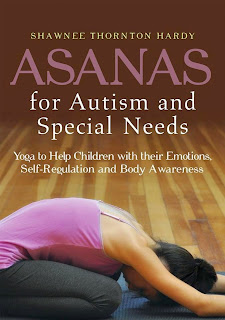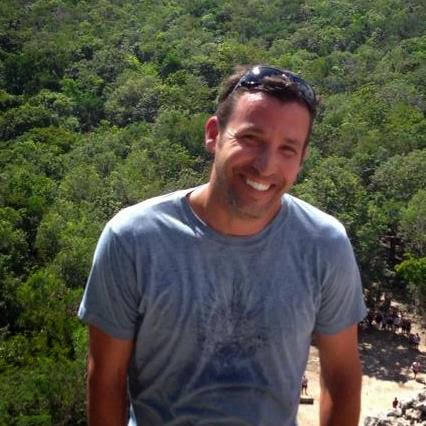Learning to teach Yoga to Help Others
Aerial Cetnar, Clinical Psychology Graduate Student, Los Angeles
“As
an undergraduate student at San Diego State University, I attended
yoga classes, especially during stressful times. I started working as
a Behavioral Health Assistant in the Psychiatric Unit at Rady
Children’s Hospital. Many of the patients suffered through various
mental illnesses. One day, one of the patients was having a rough day
and I decided to use my knowledge of yoga and meditation to help the patient relax and decrease anxiety.
This patient immediately noticed a huge difference and continued to
use the skills I showed her. Noticing this, I then decided to pursue my
yoga teacher training certification so that I could learn more about
yoga. I also thought of doing research in my graduate program to
discover the effects of yoga on mental illness.“
Aerial attended Prana’s 200hr Yoga Teacher Training Summer Intensive in June 2014. She now
lives in Pasadena and is in her first year of the Clinical Psychology
Ph.D. program at California School of Professional Psychology in Los
Angeles.
She teaches Vinyasa Flow classes at various LA Fitness locations in Los Angeles.
“It has truly been a rewarding experience, especially living in such a diverse community. It’s been so positively impactful, providing myself the opportunity to not only improve the lives of others, but learning and growing during the process. “
Deepening My Own Practice Through Yoga Teacher Training – and what happened then
Nadine Ziemert, Scientist - Tuebingen, Germany
Nadine is an
associate professor in the Microbiology Department at the University of
Tübingen, Germany. She took her 200hr RYT certification at Prana during
the spring of 2014. She divides her time between Germany and La Jolla,
where she used to live full time with her husband and dog Nala, before accepting a position abroad.
“When
I signed up for the Teacher Training with Gerhard, I didn´t want to
become a yoga teacher. I just wanted to learn more about yoga and
deepen my own practice. During the training I noticed that I had fun
teaching and people liked my approach to it. Soon after graduating I
started to teach colleagues and friends at Scripps - a lot of them had
no idea about yoga and were surprised how good it felt!
 Spending
a lot of time in the lab, I started teaching yoga mostly to scientists
who sit at their computers or stand in the lab pipetting all day. A
lot of them have lower back issues and shoulder and neck tensions, where yoga can help a lot to release pain and prevent these problems. But I found that most important are the mental benefits.
I think that especially a yoga flow style, such as Vinyasa Flow, is
perfect for scientists. For scientists – probably like many other
professions – it’s hard to stop the constant flow of thoughts and
relax. In a flowing vinyasa practice, students can concentrate on the
slow movements and transitions that calm the mind and helps to reconnect
body and mind. Many of my students mentioned that there is no other
exercise after which they feel so calm, relaxed, and energized at the
same time. I am happy to help people to get to know all the benefits
of yoga for themselves and guide them to discover that yoga is much more
than glorified stretching exercises. Personally, I think that yoga
keeps me sane, improves my stress coping skills enormously and helps to
find my inner balance.
Spending
a lot of time in the lab, I started teaching yoga mostly to scientists
who sit at their computers or stand in the lab pipetting all day. A
lot of them have lower back issues and shoulder and neck tensions, where yoga can help a lot to release pain and prevent these problems. But I found that most important are the mental benefits.
I think that especially a yoga flow style, such as Vinyasa Flow, is
perfect for scientists. For scientists – probably like many other
professions – it’s hard to stop the constant flow of thoughts and
relax. In a flowing vinyasa practice, students can concentrate on the
slow movements and transitions that calm the mind and helps to reconnect
body and mind. Many of my students mentioned that there is no other
exercise after which they feel so calm, relaxed, and energized at the
same time. I am happy to help people to get to know all the benefits
of yoga for themselves and guide them to discover that yoga is much more
than glorified stretching exercises. Personally, I think that yoga
keeps me sane, improves my stress coping skills enormously and helps to
find my inner balance.
Now
back in Germany, I teach a weekly class at a Vinyasa studio in
Tuebingen. Teachers have very different backgrounds here and it is
interesting to learn how they got into Yoga. I also teach a more
diverse group of people now with varying backgrounds and age groups, so I
learn a lot too. The teaching forces me to keep my own practice up,
which is sometimes not easy between the job, travelling and adapting to a
new city. But it´s definitely worth it, it makes me happier and more
balanced. “









.jpg)






